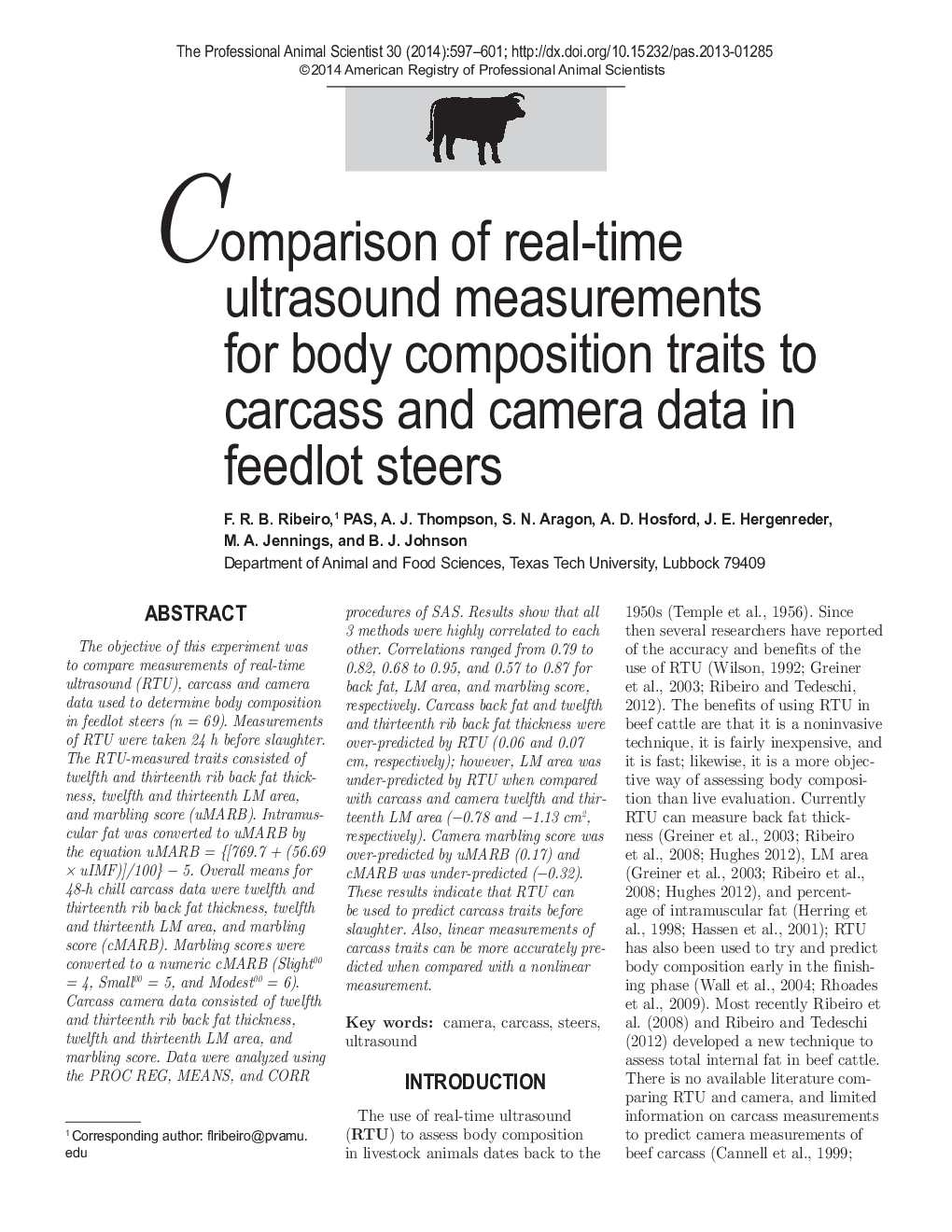| Article ID | Journal | Published Year | Pages | File Type |
|---|---|---|---|---|
| 2453805 | The Professional Animal Scientist | 2014 | 5 Pages |
Abstract
The objective of this experiment was to compare measurements of real-time ultrasound (RTU), carcass and camera data used to determine body composition in feedlot steers (n = 69). Measurements of RTU were taken 24 h before slaughter. The RTU-measured traits consisted of twelfth and thirteenth rib back fat thickness, twelfth and thirteenth LM area, and marbling score (uMARB). Intramuscular fat was converted to uMARB by the equation uMARB = {[769.7 + (56.69 Ã uIMF)]/100} â 5. Overall means for 48-h chill carcass data were twelfth and thirteenth rib back fat thickness, twelfth and thirteenth LM area, and marbling score (cMARB). Marbling scores were converted to a numeric cMARB (Slight00 = 4, Small00 = 5, and Modest00 = 6). Carcass camera data consisted of twelfth and thirteenth rib back fat thickness, twelfth and thirteenth LM area, and marbling score. Data were analyzed using the PROC REG, MEANS, and CORR procedures of SAS. Results show that all 3 methods were highly correlated to each other. Correlations ranged from 0.79 to 0.82, 0.68 to 0.95, and 0.57 to 0.87 for back fat, LM area, and marbling score, respectively. Carcass back fat and twelfth and thirteenth rib back fat thickness were over-predicted by RTU (0.06 and 0.07 cm, respectively); however, LM area was under-predicted by RTU when compared with carcass and camera twelfth and thirteenth LM area (â0.78 and â1.13 cm2, respectively). Camera marbling score was over-predicted by uMARB (0.17) and cMARB was under-predicted (â0.32). These results indicate that RTU can be used to predict carcass traits before slaughter. Also, linear measurements of carcass traits can be more accurately predicted when compared with a nonlinear measurement.
Keywords
Related Topics
Life Sciences
Agricultural and Biological Sciences
Animal Science and Zoology
Authors
F.R.B. PAS, A.J. Thompson, S.N. Aragon, A.D. Hosford, J.E. Hergenreder, M.A. Jennings, B.J. Johnson,
